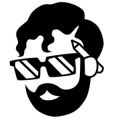About the artist
Henri Cartier-Bresson (August 22, 1908, Chanteloup-August 3, 2004, Céreste) was a French photographer whose spontaneous photographs helped establish photojournalism as an art form. Henri Cartier-Bresson developed a strong fascination with painting early on, in particular, Surrealism. After spending a year in the Ivory Coast, he discovered the Leica camera in 1932, which marked the beginning of his passion for photography. In 1932 he exhibited his work for the first time at the Julien Levy Gallery in New York. Later on, he made films with Jean Renoir. Taken prisoner of war in 1940, he escaped on his third attempt in 1943 and became a member of an underground organization to assist prisoners and escapees.
In 1947 Breton established - along with Robert Capa, George Rodger, David 'Chim' Seymour and William Vandivert - Magnum Photos. After three years traveling through the East, he returned to Europe in 1952, where he published his first book, Images à la Sauvette (published in English as The Decisive Moment). The title refers to a central idea in his work—the decisive moment—the elusive instant when, with brilliant clarity, the appearance of the subject reveals in its essence the significance of the event of which it is a part, the most telling organization of forms. From 1968 he began to reduce his photographic activities, preferring to concentrate on drawing and painting. In 2003, with his wife and daughter, he created the Fondation Henri Cartier-Bresson in Paris for the preservation of his work. Cartier-Bresson received an extraordinary number of prizes, awards and honorary doctorates. He died at his home in Provence on 3 August 2004.


